Middle East
What’s happening with Lebanon’s economy and will it recover? | Israel attacks Lebanon News
Lebanon’s economy has been on a turbulent journey in recent years, with a triple crisis affecting its banking sector, economy, and currency.
Israel’s recent war on the country only intensified the challenges, leaving Lebanon grappling with destruction and uncertainty.
To understand the current economic landscape, it is essential to look back at key events over the past decade.
The ‘WhatsApp tax’ protests, 2019
Although the 2019 protests were initially prompted by a proposed tax on WhatsApp calls, the underlying cause was deep-seated anger over the government’s failed policies, mismanagement, corruption, and the deep economic inequality that resulted.
Public trust in the government had been declining for years, driven by its controversial fiscal policies and the central bank’s failed “financial engineering” in 2016 – complex swaps and issuance of financial instruments to attract foreign currency and inject liquidity into the banking system.
Persistent budget deficits and inflated public sector salaries – boosted by a large salary hike in 2018 – further affected trust.
The resulting economic hardship triggered the October 2019 protests and exposed the country’s economic fragility.
In March 2020, Prime Minister Hassan Diab’s government defaulted on its sovereign debt, just as the COVID-19 pandemic struck, disrupting global supply chains and exacerbating Lebanon’s vulnerabilities.
The pandemic further strained an already weakened healthcare system, leading to critical shortages of hospital beds and essential medications.
Its reliance on tourism and remittances made Lebanon particularly susceptible to the global economic downturn.
The Beirut port explosion, 2020
In August 2020, one of the most powerful non-nuclear explosions in history devastated Beirut.
In addition to the widespread destruction and loss of life it caused in the capital, the explosion exposed deep-rooted corruption and negligence that further eroded public trust in the government.
It also severely discouraged foreign investment, further destabilising an already precarious situation.
The Lebanese pound went into freefall throughout 2020, fuelling rampant inflation and eroding people’s purchasing power.
Then, in 2022, Russia invaded Ukraine, upending global fuel and food supply chains that affected countries worldwide.
In Lebanon, it further intensified the already intense economic pressure on households, which were struggling to maintain basic living standards as the government increasingly struggled to provide the most essential services – and fell short.
Sali Hafiz: ‘Wonder Woman’ demands her money
As the banking sector fell deeper into turmoil starting in 2019, and in the third quarter of that year, banks began to severely restrict people’s access to their deposits.
Then in September 2022, Sali Hafiz took a replica gun and held up a Beirut bank to access her own savings. She immediately became a symbol of the suffering that many Lebanese were going through, and they started calling her “Wonder Woman”.
These compounding crises created a perfect storm, leaving Lebanon teetering on the edge of collapse.
Many families were forced to sell cherished valuables, while reliance on overseas remittances intensified. Yet even this lifeline proved insufficient for many.
The desperation fuelled a surge of Lebanese, including skilled professionals, emigrating – the exodus of “boat people” attempting perilous sea journeys becoming a stark symbol of the nation’s despair.
In the third quarter of 2019, the government established a dual exchange rate regime – an official rate and a free market rate – and imposed price ceilings on certain commodities, including fuel and medication.
This led to shortages and the development of black markets for these commodities, beginning in 2020 and escalating to extensive queues and widespread public anger by 2021.
Thus, by the end of 2022, at the end of President Michel Aoun’s mandate and the resignation of Prime Minister Najib Mikati’s government, the debt default, pandemic, port explosion, currency devaluation, and global price hikes had resulted in unprecedented economic and social distress.
A glimmer of hope dashed
In 2023, the government stopped printing Lira banknotes, which helped the exchange rate stabilise. In parallel, price controls were lifted the previous year, ending shortages and black markets.
However, this hope was short-lived as Hezbollah began militarily engaging Israel on October 8 in the aftermath of the October 7, 2023, events in Gaza. After months of trading attacks over the border, Israel launched a full-scale assault on the country in September 2024, leaving it devastated by the end of the year.
The resulting destruction was huge, estimated by the World Bank at approximately $3.4bn, while economic losses, including lost productivity and trade disruptions, amounted to an additional $5.1bn.
Combined, they represent a staggering 40 percent of Lebanon’s gross domestic product (GDP).
The conflict further disrupted trade and deterred foreign investment, exacerbating existing challenges – destroyed infrastructure hampered transport and logistics, severely affecting businesses already barely surviving.
Unplugging Hezbollah
Hezbollah has had a huge role in Lebanese society for decades, providing financial and social support to its support base in Beirut’s southern suburb, the south, and northern Bekaa Valley.
But its role was significantly degraded by the war, effectively “unplugging” its contributions from the economic system, which is likely to negatively affect those who relied on its support.
While the full macroeconomic effect is not yet clear, this could lead to further social and economic instability, especially given that Israel focused its destructive attention on areas where Hezbollah’s support base – now deprived of Hezbollah’s support – lives.
Hopes for the future
Lebanon has a new government under President Joseph Aoun and Prime Minister Nawaf Salam, and hopes are running high for renewed political will to implement difficult reforms given that the new government enjoys re-found popular legitimacy.
Among the potential avenues the new government can explore would be banking reform, increasing trade and foreign investment, and increasing its attractiveness as a destination for businesses.
However, it faces immense challenges posed by the deep-rooted problems that have plagued Lebanon for at least a decade.
What remains to be seen is whether it will be able to implement economic reforms, maintain political stability, and navigate the complexities of the regional geopolitical landscape.
Ultimately, the success of these efforts will directly affect the Lebanese people, particularly the most vulnerable, in a context where the poverty rate has increased tremendously since 2019.
Failure to deliver could exacerbate the daily struggle for a decent living, pushing more citizens towards desperate measures, including increased emigration and brain drain, further eroding the nation’s social fabric.
Middle East
What are Putin’s conditions for a ceasefire in Ukraine? | Conflict News
Russian President Vladimir Putin said on Thursday that Moscow was in favour of the principle of a ceasefire in the war against Ukraine, as proposed by the Donald Trump administration in the United States, but raised questions he said the Kremlin needed answers to before it could commit to a truce.
He said Russia needed to discuss these questions and the terms of a peace proposal with the US.
His comments, the first on the proposed ceasefire, drew criticism from Ukraine and a muted response from Trump, who has oscillated between expressing confidence in Putin’s commitment to a peace deal and threatening Russia with new sanctions if it does not agree to a ceasefire.
Here is what Putin said, the conditions he laid out for Moscow to back a ceasefire, and how the US and Ukraine have reacted to his recent statement:
What is the US-Ukraine ceasefire deal?
On Tuesday, teams representing Washington and Kyiv met in Saudi Arabia’s Jeddah to negotiate terms for peace in Ukraine.
After this meeting, the two countries released a joint statement, proposing an “immediate, interim” 30-day ceasefire on the war front.
The statement placed emphasis on “the exchange of prisoners of war, the release of civilian detainees, and the return of forcibly transferred Ukrainian children” during the ceasefire period.
The document did not mention sanctions on Russia or security guarantees for Ukraine, but it did mention that Ukraine’s European allies would be “involved in the peace process”.
The document also did not specify what would happen with the Ukrainian soldiers in Russia’s Kursk.
What did Putin say about the ceasefire?
Nothing, for almost two days.
Then, on Thursday, at a news conference alongside Belarusian President Alexander Lukashenko, Putin responded to the ceasefire proposal.
He said the idea of a ceasefire was “correct” and Russia supported it, in principle. “We agree with the proposals to cease hostilities,” he told reporters in Moscow.
But, he added, “there are issues that we need to discuss, and I think that we need to talk about it with our American colleagues and partners, and, perhaps, have a call with President Trump and discuss it with him.”
What ‘issues’ does Putin want resolved before a ceasefire?
The Russian president outlined three questions and suggested that resolving them in a manner satisfactory to Moscow would be preconditions for the Kremlin to accept a ceasefire.
How will the Kursk incursion play out?
The first question Putin posed pertains to Ukrainian troops in the Russian region of Kursk.
In August last year, the Ukrainian army launched a surprise incursion into Kursk, seizing territory.
While the Russian army has now reclaimed 1,100 square km (425 square miles) of Kursk – almost the whole area that Ukrainian forces had grabbed – Kyiv’s troops are still present.
“Will all those who are there come out without a fight? Or will the Ukrainian leadership order them to lay down arms and surrender?” Putin questioned.
Will Ukraine mobilise troops and receive new weapons during the ceasefire?
Putin also suggested that a 30-day ceasefire could be used by Ukraine to mobilise new forces at a time when its troops are facing setbacks not just in Kursk but also in eastern Ukraine, where Russia has made slow, grinding gains in recent months.
During the news conference, Putin said “Russian troops are advancing in almost all areas of the front… So how will these 30 days be used? For forced mobilisation to continue in Ukraine, for weapons to be delivered there, for the newly-mobilised units to be trained? … How can we and how will we be guaranteed that nothing like that will happen? How will control be organised?”
Yuri Ushakov, Putin’s foreign policy adviser, also said on Thursday that the 30-day pause in fighting would only help Ukrainian troops regroup, deeming the ceasefire a “temporary respite” for the Ukrainian army.
In recent months, Ukraine has suffered manpower shortages. In January, Ukrainian troops retreated from Kurakhove, a town in Ukraine’s Donetsk region, when Russian troops claimed control.
Who will verify the ceasefire?
Putin also questioned how the ceasefire would be monitored and who would ensure that both parties are following the agreement.
“We proceed from the fact that this cessation should be such that it would lead to long-term peace and eliminate the original causes of this crisis,” he said.
“Who will give orders to stop hostilities? … Who will determine where and who has violated a possible ceasefire agreement for 2,000 kilometres (1,243 miles)?”
How has the US reacted?
Putin’s comments came shortly after US President Donald Trump’s special envoy Steve Witkoff arrived in Russia to meet with Putin and other Russian officials. Although Witkoff is officially Trump’s Middle East envoy, he has also been involved in Russia relations.
Last month, he became the first high-level US official to travel to Russia since its 2022 invasion of Ukraine. During this visit, he secured the release of Marc Fogel, an imprisoned American, in exchange for the US releasing imprisoned Russian Alexander Vinnik. Witkoff was also part of the US team during negotiations with Russian officials in Saudi Arabia.
On Thursday, at the beginning of a meeting with NATO Secretary-General Mark Rutte, Trump said that Putin had released “a very promising statement, but it wasn’t complete”.
“Now we’re going to see whether or not Russia’s there. And if they’re not, it’ll be a very disappointing moment for the world.”
Also on Thursday, US Treasury Secretary Scott Bessent told CNBC that Trump is “willing to apply maximum pressure on both sides”, including sanctions on Russia.
Since the beginning of the war in February 2022, the US and its allies have imposed at least 21,692 sanctions on Russia, targeting individuals, media organisations, the military sector, energy sector, aviation, shipbuilding and telecommunications, among other sectors.
Last week, the US temporarily suspended military aid and intelligence sharing to Ukraine, after a White House meeting between Trump and Ukrainian President Volodymyr Zelenskyy spiralled into acrimony.
The aid and intelligence sharing were restored after the US and Ukraine jointly agreed on the 30-day ceasefire agreement in Jeddah.
How has Ukraine reacted?
In his nightly address posted on X on Thursday, Zelenskyy said that Putin is “preparing to reject” the ceasefire proposal.
“Putin is afraid to tell President Trump directly that he wants to continue this war and keep killing Ukrainians,” said Zelenskyy.
Marina Miron, a post-doctoral researcher at the defence studies department of King’s College London, said it would make sense for Russia to stall on a decision about the ceasefire.
“Until the ceasefire is implemented and everybody is on the same page, time will pass, which will probably give the Russians the necessary time to at least get Kursk back so that it removes any potential negotiating bonuses for Ukraine,” Miron told Al Jazeera on Wednesday.
In his address, Zelenskyy added: “Now is the time to increase pressure on him [Putin]. Sanctions must be applied – ones that will work.” The Ukrainian leader said his country is willing to continue working with its US and European partners to further the peace process.
Could the US and Ukraine accept Russia’s peace terms?
It’s unclear. But some experts believe that Trump’s track record suggests that the US could try to accommodate Putin’s concerns. If that happens, Ukraine might have no choice but to accept this.
“If past performance is any guide, [Russia’s] demands will be backed by the US,” Keir Giles, a senior consulting fellow at the London-based Chatham House think tank, told Al Jazeera on Wednesday.
“I think that the Trump administration has shown to Ukraine very clearly that Ukraine is not going to dictate the rules after the debacle in the Oval Office,” Miron added.
Middle East
Hamas ‘ready’ to hand over Israeli captive and four bodies held in Gaza | Israel-Palestine conflict News
The Palestinian group agrees to resume ceasefire talks, promising to free Edan Alexander and hand over four other captives’ bodies.
The Palestinian group Hamas has announced it is ready to free Israeli American captive Edan Alexander and hand over the remains of four other dual nationals, after holding indirect talks with Israel.
Hamas said in a statement on Friday that its delegation received a proposal from mediators on Thursday to resume ceasefire negotiations, and the group’s reply “included its agreement to release the Israeli soldier Edan Alexander, who holds American citizenship, along with the remains of four others holding dual citizenship”.
Earlier, Hamas official Husam Badran said the group “is determined to implement the ceasefire agreement in its various stages, and the occupation’s departure from what was agreed will take us back to zero”.
Following the Palestinian group’s statement, Israel accused Hamas of engaging in “psychological warfare”.
“Whereas Israel accepted the Witkoff framework, Hamas remains firm in its refusal and has not budged an inch,” Prime Minister Benjamin Netanyahu’s office said, referring to US Middle East envoy Steve Witkoff, and accusing Hamas of resorting to “manipulation and psychological warfare.”
On Tuesday, a senior Hamas official had announced that a new round of indirect talks through mediators had begun in the Qatari capital Doha. Israel had also sent a team of negotiators.
The first phase of a truce between Hamas and Israel in the Gaza Strip ended on March 1, without agreement on the next stages.
During the initial six-week phase of the ceasefire, Hamas released 33 captives, including eight who were deceased, in exchange for about 1,800 Palestinian prisoners, many held in Israeli prisons without charge.
After the truce agreement expired without a new deal, Israel swiftly implemented a total blockade on the besieged Palestinian territory, leaving 2.3 million people on the brink of mass starvation.
Al Jazeera’s Tareq Abu Azzoum, reporting from Khan Younis, said civilians “are facing severe and chronic shortage” of basic food and medical supplies.
Olga Cherevko from the UN Office for the Coordination of Humanitarian Affairs (OCHA) told Al Jazeera that the situation was dire “on multiple levels”.
“The hope that began when the ceasefire started is being replaced with fear, alarm and concern that supplies are running out,” she said.
Cherevko said food availability “could deteriorate quite rapidly unless the supplies are restored”. Six of the 25 World Food Programme bakeries have been forced to close because there is no fuel to run them.
According to Gaza’s Government Media Office, shortages have worsened with 80 percent of residents losing access to food sources because of the closing of land crossings.
Israel had also severed electricity to a crucial water desalination plant, threatening Gaza’s potable water supply.
“The water and sanitation situation was already dire with most of the facilities destroyed during the months of fighting. This latest [Israeli] decision reduces access to drinking water to about 600,000 people,” Cherevko said.
Despite the ongoing talks over the next phase of the ceasefire, Israel has continued to bombard Gaza, with attacks on Gaza City and Beit Lahiya killing two children.
Gaza’s Ministry of Health said at least 48,524 people have been killed and 111,955 wounded in Israel’s war on Gaza.
At least 1,139 people were killed in Israel during the October 7, 2023, Hamas-led attacks and more than 200 were taken captive.
Middle East
Iraq says ‘dangerous’ ISIL leader Abu Khadija killed | ISIL/ISIS News
Prime Minister al-Sudani hails the killing of Abdallah Makki Muslih al-Rufay’i as a major blow to ISIL remnants in Iraq.
The leader of the ISIL (ISIS) group has been killed by Iraqi security forces with support from the US-led anti-ISIL coalition, Iraq’s prime minister said.
Prime Minister Mohammed Shia al-Sudani said on Friday that Abdallah Makki Muslih al-Rufay’i, also known as Abu Khadija, was killed by Iraqi security forces, with the support of the US-led coalition fighting ISIL.
“The Iraqis continue their impressive victories over the forces of darkness and terrorism,” Sudani wrote in a statement on X, adding that Abu Khadija was “one of the most dangerous terrorists in Iraq and the world.”
In 2017, Iraq declared victory over ISIL by reclaiming all territories the armed group controlled since the summer of 2014, which was estimated to be about a third of the country’s territory.
But the group still maintains sleeper cells in large areas in Iraq and occasionally launches attacks.
Friday’s announcement coincided with Syria’s interim Foreign Minister Asaad al-Shaibani visiting Iraq, where he said his government was ready to “reinforce cooperation” in the fight against remnants of ISIL.
“Security is a shared responsibility,” al-Shaibani told a news conference alongside Iraqi Foreign Minister Fuad Hussein in Baghdad. “We are ready to reinforce cooperation with Iraq in the fight against Daesh [an Arabic acronym for ISIL] along the whole length of the border. Terrorism knows no borders,” the official INA news agency reported.
He also said one aim of Friday’s visit was to enhance trade between the two countries, and reopening the border would be a fundamental step in doing so.
Iraq shut the frontier on security grounds following the lightning opposition offensive that toppled Syrian President Bashar al-Assad in December.
Relations between the neighbours have been complex since the removal of al-Assad, who was a close ally of the government in Baghdad.
While Iraq is a strategic partner of the United States, it is also a key ally of Iran. Some Iraqi armed groups fought to defend al-Assad’s rule during Syria’s 13-year civil war that began with the security forces’ crackdown on democracy protests in 2011.
Syria’s interim President Ahmed al-Sharaa, who has sought to present a moderate image since coming to power, once fought with al-Qaeda in Iraq against US forces and their allies.
-
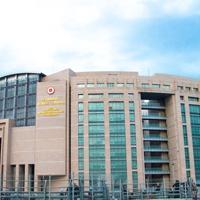
 Daily Agenda2 months ago
Daily Agenda2 months ago5 suspects nabbed for sharing information with Iranian intel
-
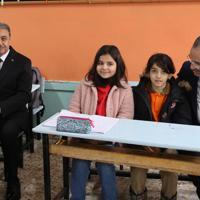
 Politics2 months ago
Politics2 months agoSoutheastern city enforces fines to tackle student absenteeism
-
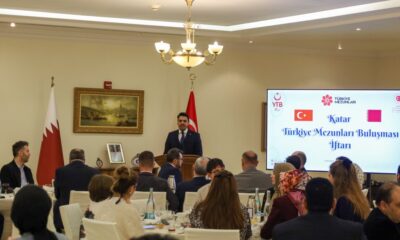
 Lifestyle2 months ago
Lifestyle2 months agoTürkiye’s Embassy in Doha hosts iftar for alumni to foster connections
-
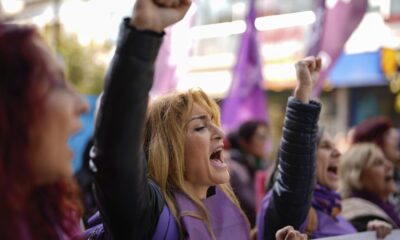
 Refugees2 months ago
Refugees2 months agoInternational Women’s Day: global protests demand equal rights
-
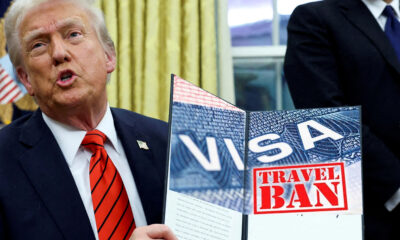
 Daily Agenda2 months ago
Daily Agenda2 months agoTrump hangi ülkelere yasak getirdi.
-
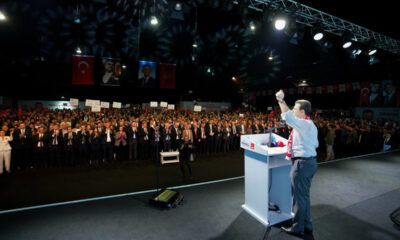
 Politics2 months ago
Politics2 months agoImpressions from İmamoğlu’s Antalya rally
-
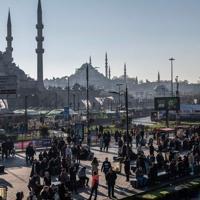
 Politics2 months ago
Politics2 months agoIstanbul ‘may break 110-year temperature record for March’
-

 Sports2 months ago
Sports2 months agoPaulista 19 maç sonra geri döndü, maç sonrası isyan etti

